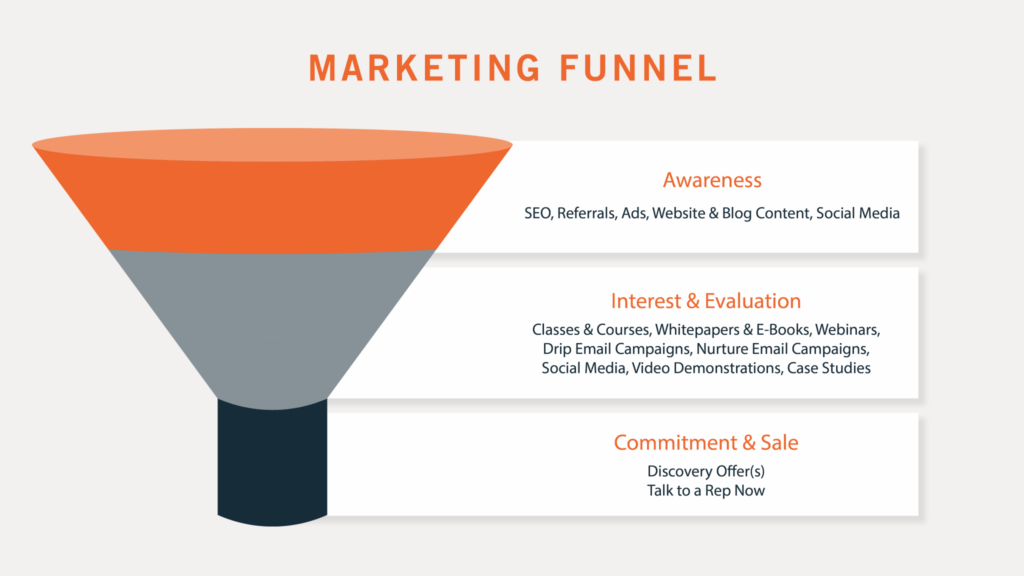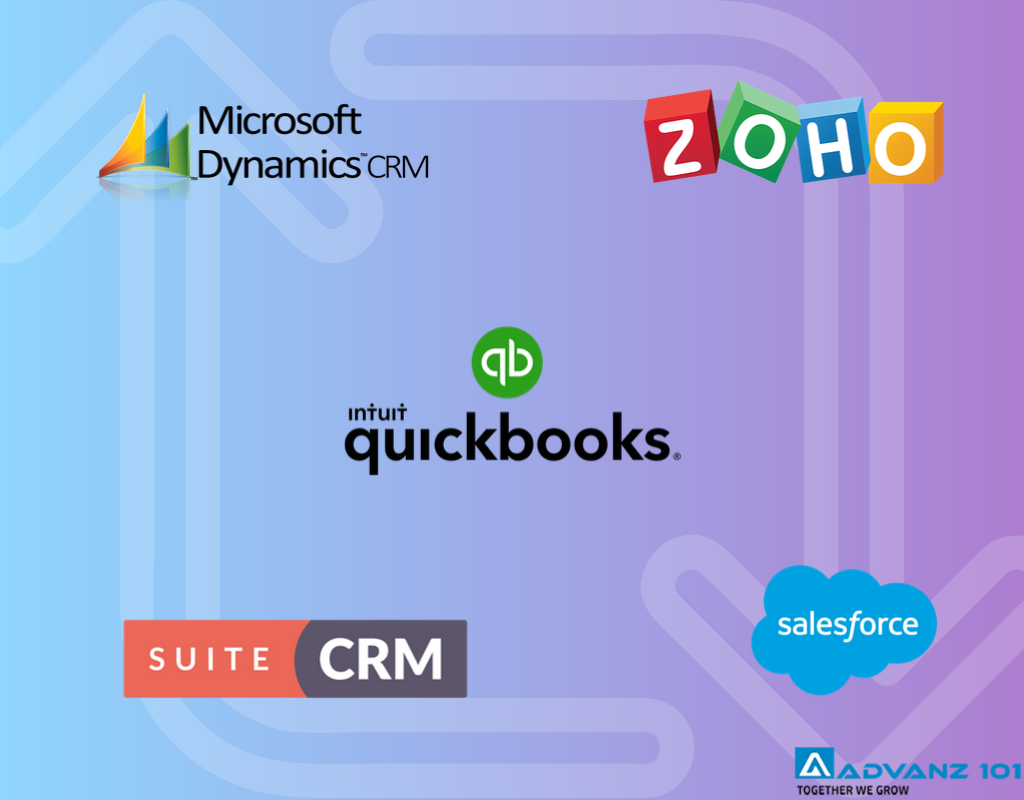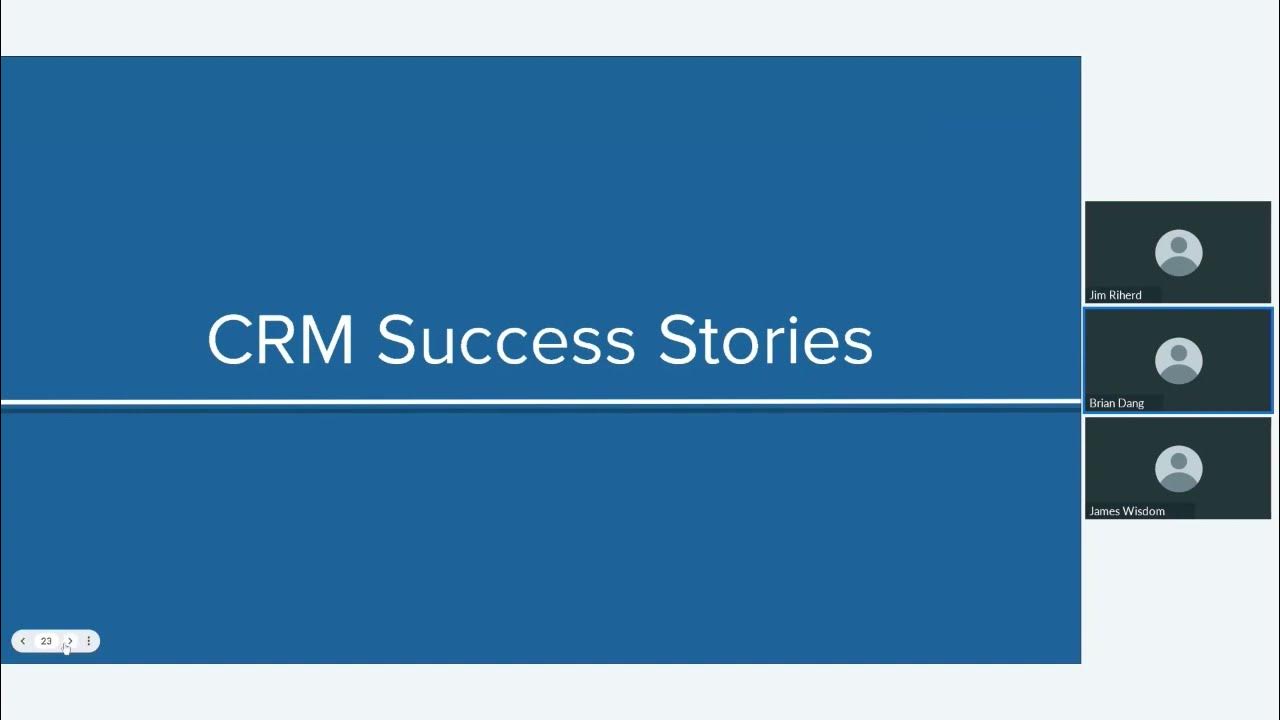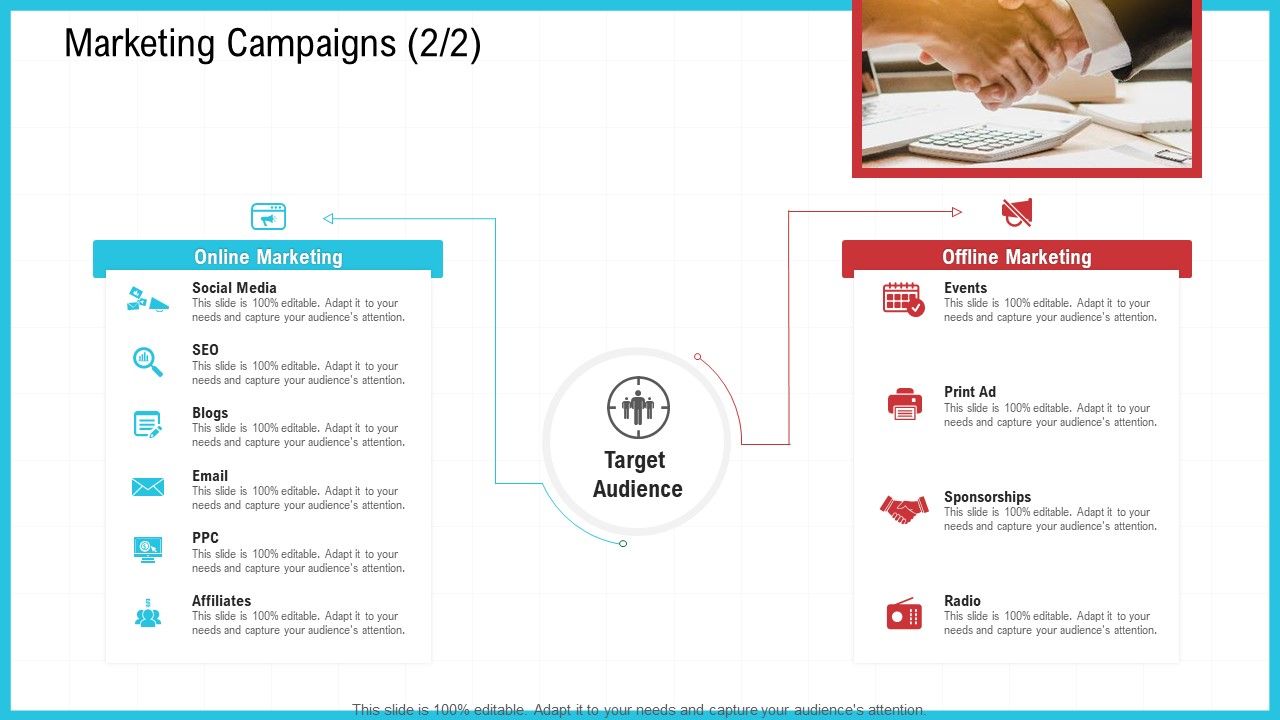
Mastering the CRM Marketing Funnel: A Comprehensive Guide to Setup, Optimization, and Growth
In today’s fiercely competitive business landscape, understanding and leveraging the power of a well-defined CRM marketing funnel is no longer optional – it’s essential. This guide will walk you through every aspect of setting up, optimizing, and growing your business with a robust CRM marketing funnel. We’ll delve into the intricacies of each stage, providing actionable insights and practical strategies to help you convert leads into loyal customers and drive sustainable growth. Forget generic advice; this is your roadmap to CRM marketing success.
What is a CRM Marketing Funnel? Unveiling the Core Concepts
Before we dive into the specifics of setup, let’s clarify what a CRM marketing funnel actually *is*. At its heart, a CRM marketing funnel is a visual representation of the customer journey. It maps out the various stages a potential customer goes through, from initial awareness to becoming a paying customer and, ideally, a brand advocate. Think of it as a guided tour for your customers, leading them through a series of interactions designed to nurture them towards a purchase. It’s about understanding your customer’s needs and providing value every step of the way.
A CRM (Customer Relationship Management) system is the technological backbone that powers this funnel. It’s the central hub where you store, manage, and analyze customer data. This data is the lifeblood of your funnel, allowing you to personalize your interactions, tailor your messaging, and ultimately, improve your conversion rates. Without a solid CRM, you’re essentially navigating blindfolded.
The funnel itself is typically visualized as a funnel shape, with a wider top representing the large pool of potential customers and a narrower bottom representing the smaller group of converted customers. The stages within the funnel are generally divided into the following:
- Awareness: This is the very top of the funnel, where potential customers first become aware of your brand and products or services.
- Interest: Once aware, potential customers begin to show interest and start exploring your offerings.
- Decision: Here, they evaluate their options and make a decision about whether or not to make a purchase.
- Action (Purchase): This is where the customer actually makes a purchase.
- Loyalty (Advocacy): This is the stage where you nurture your customers to become repeat buyers and brand advocates.
Understanding these stages is crucial because it allows you to tailor your marketing efforts to the specific needs and behaviors of customers at each point. It’s about delivering the right message, at the right time, through the right channel. The power of a well-structured funnel lies in its ability to guide customers seamlessly through these stages.
Setting Up Your CRM Marketing Funnel: A Step-by-Step Approach
Now, let’s get down to the practicalities. Setting up a CRM marketing funnel isn’t just about implementing software; it’s about strategically aligning your marketing efforts with your customer journey. Here’s a step-by-step guide to get you started:
1. Choose the Right CRM System
The foundation of your funnel is your CRM system. There are countless options available, each with its own strengths and weaknesses. The key is to choose a system that aligns with your business needs and budget. Consider factors such as:
- Scalability: Can the CRM grow with your business?
- Integration: Does it integrate with your existing marketing tools (email marketing, social media, website)?
- Features: Does it offer the features you need (contact management, lead scoring, automation)?
- User-friendliness: Is it easy for your team to learn and use?
- Pricing: Is it affordable and provides the necessary value?
Popular CRM platforms include Salesforce, HubSpot, Zoho CRM, Pipedrive, and Freshsales. Research and compare different options to find the best fit for your specific requirements. Don’t be afraid to test out free trials before committing.
2. Define Your Target Audience(s)
Who are you trying to reach? This seems like a simple question, but it’s crucial to get it right. Create detailed buyer personas that represent your ideal customers. This involves understanding their demographics, psychographics, pain points, motivations, and buying behaviors. The more you know about your target audience, the better you can tailor your marketing messages and offers.
Consider creating multiple buyer personas if you serve different customer segments. This allows you to personalize your funnel for each segment, leading to higher conversion rates. Gathering this data might involve market research, customer surveys, and analyzing your existing customer data.
3. Map Your Customer Journey
This is where you visualize the steps your customers take from initial awareness to becoming loyal advocates. Consider each stage of the funnel and identify the touchpoints (website, social media, email, etc.) your customers interact with. What actions do they take at each stage? What information do they need? What are their potential pain points?
Creating a customer journey map helps you identify gaps and opportunities in your funnel. It allows you to optimize your messaging, content, and offers to guide customers through each stage more effectively. This is a critical step that ensures a smooth and intuitive experience for your potential customers.
4. Set Up Lead Capture Mechanisms
You need a way to capture leads at the top of your funnel. This could include:
- Website forms: Offer valuable content (eBooks, white papers, webinars) in exchange for contact information.
- Landing pages: Create dedicated landing pages for specific offers and campaigns.
- Social media: Run lead generation campaigns on platforms like Facebook and LinkedIn.
- Pop-up forms: Use pop-up forms strategically to capture email addresses.
Make sure your lead capture forms are easy to use and ask for only the essential information. Avoid overwhelming potential leads with too many questions upfront. The goal is to collect enough information to qualify the lead and nurture them further down the funnel.
5. Implement Lead Scoring
Lead scoring is the process of assigning points to leads based on their behavior and demographics. This allows you to prioritize your sales and marketing efforts by focusing on the leads that are most likely to convert. For example, a lead who downloads an ebook might receive a certain number of points, while a lead who visits your pricing page might receive more points.
Lead scoring helps you identify qualified leads, which allows your sales team to focus their time and resources on the most promising prospects. It also helps you personalize your marketing efforts by tailoring your messaging and offers to the lead’s specific needs and interests.
6. Automate Your Marketing Workflows
Automation is key to scaling your CRM marketing funnel. Use your CRM system to automate repetitive tasks, such as:
- Email marketing: Set up automated email sequences to nurture leads and send targeted messages.
- Lead nurturing: Automate the process of sending relevant content and offers to leads based on their behavior and demographics.
- Task management: Automate the assignment of tasks to your sales team.
- Segmentation: Automatically segment your leads based on their behavior and demographics.
Automation frees up your time so you can focus on more strategic tasks, such as developing new marketing campaigns and analyzing your results. It also ensures that your leads receive consistent and timely communication.
7. Integrate with Your Marketing Tools
Connect your CRM with your other marketing tools, such as your email marketing platform, social media channels, and website analytics. This will allow you to track your leads’ behavior across all channels and gain a more complete view of their journey. This integration is crucial for a unified customer experience.
Data synchronization across your tools ensures you have a holistic understanding of your customer interactions, enabling you to make data-driven decisions. It also streamlines your workflows and eliminates the need for manual data entry.
8. Create Content for Each Stage of the Funnel
Content is king, especially when it comes to a CRM marketing funnel. Create content that is relevant to each stage of the funnel. For example:
- Awareness: Blog posts, social media updates, infographics, and videos.
- Interest: Ebooks, white papers, webinars, and case studies.
- Decision: Product demos, free trials, testimonials, and pricing comparisons.
- Action: Clear calls to action and easy checkout processes.
- Loyalty: Customer newsletters, exclusive offers, and loyalty programs.
Your content should be valuable, informative, and engaging. It should address your target audience’s pain points and provide solutions to their problems. The right content at the right stage can significantly increase your conversion rates.
9. Track and Analyze Your Results
Regularly track and analyze your funnel’s performance. Use your CRM system and other analytics tools to monitor key metrics such as:
- Conversion rates: How many leads are converting at each stage?
- Cost per lead: How much are you spending to acquire each lead?
- Customer lifetime value (CLTV): How much revenue are you generating from each customer over their lifetime?
- Website traffic: How much traffic are you driving to your website?
- Email open and click-through rates: How effective are your email campaigns?
Use these insights to identify areas for improvement and optimize your funnel. Experiment with different strategies, track your results, and refine your approach based on what works best. This is an ongoing process, not a one-time setup.
Optimizing Your CRM Marketing Funnel: Continuous Improvement for Maximum Impact
Setting up your funnel is just the first step. The real magic happens when you continuously optimize it. This means regularly analyzing your data, identifying areas for improvement, and making adjustments to your strategy. Here are some key optimization strategies:
1. A/B Testing
A/B testing involves creating two versions of a marketing element (e.g., a headline, a call to action, an email subject line) and testing them against each other to see which performs better. This allows you to make data-driven decisions about your marketing efforts. Test different elements of your website, landing pages, emails, and social media campaigns to see what resonates best with your audience.
2. Personalization
Personalize your marketing messages and offers based on your leads’ behavior, demographics, and interests. This can be as simple as including a lead’s name in an email or as complex as creating dynamic content that changes based on their preferences. Personalization makes your marketing more relevant and engaging, leading to higher conversion rates. Leverage the data stored within your CRM to tailor the experience.
3. Segmentation
Segment your leads into different groups based on their characteristics and behavior. This allows you to tailor your marketing messages and offers to each segment’s specific needs and interests. For example, you could segment your leads based on their industry, company size, or stage in the buying process. Segmentation is a powerful way to improve the relevance of your marketing.
4. Retargeting
Retargeting involves showing ads to people who have already interacted with your website or other marketing materials. This is a great way to re-engage leads who haven’t converted yet. For example, you could show ads to people who visited your pricing page but didn’t make a purchase. Retargeting can significantly increase your conversion rates.
5. Improve Website User Experience (UX)
Make sure your website is easy to navigate, mobile-friendly, and provides a seamless user experience. A poor UX can drive leads away. Optimize your website for speed, readability, and visual appeal. Make sure your call to actions are clear and prominent. A positive user experience is crucial for converting leads into customers.
6. Refine Your Lead Scoring Model
Regularly review and refine your lead scoring model to ensure it accurately reflects your ideal customer profile. Adjust the points assigned to different actions and behaviors based on your results. Monitor your lead scoring model’s performance and make adjustments as needed. A well-tuned lead scoring model is essential for prioritizing your sales and marketing efforts.
7. Monitor and Manage Data Quality
Ensure the data in your CRM is accurate and up-to-date. Regularly clean your data by removing duplicates, correcting errors, and updating outdated information. Poor data quality can lead to inaccurate reporting and wasted marketing efforts. Implement data validation rules to prevent errors from entering your CRM. Accurate data is the foundation of effective CRM marketing.
8. Provide Excellent Customer Service
Exceptional customer service is essential for building loyalty and encouraging repeat purchases. Respond to customer inquiries promptly and effectively. Go above and beyond to exceed their expectations. Happy customers are more likely to become brand advocates and recommend your business to others. Customer service is a critical component of the entire funnel.
9. Stay Up-to-Date with Industry Trends
The marketing landscape is constantly evolving. Stay informed about the latest trends and technologies in CRM marketing. Attend industry events, read blogs, and follow thought leaders. Experiment with new strategies and technologies to stay ahead of the competition. Continuous learning is essential for long-term success.
Boosting Your CRM Marketing Funnel: Advanced Strategies for Growth
Once you’ve mastered the basics and optimized your funnel, you can start exploring advanced strategies to drive even greater growth. Here are a few ideas:
1. Implement Marketing Automation Workflows for Every Stage
Don’t just automate email campaigns; automate workflows for every stage of the funnel. This includes automating lead nurturing, sales follow-up, and customer onboarding. Automated workflows can significantly improve your efficiency and effectiveness. Think about every touchpoint and how you can streamline it.
2. Leverage Behavioral Segmentation
Go beyond basic segmentation and segment your leads based on their behavior on your website, in your emails, and on social media. This allows you to tailor your marketing messages and offers to their specific actions and interests. Behavioral segmentation provides a deeper level of personalization.
3. Integrate with Social Media
Integrate your CRM with your social media channels to track your leads’ social media activity and engage with them on social media. This allows you to gain a more complete view of your leads and personalize your interactions. Social media integration enhances your ability to connect with your audience.
4. Use Predictive Analytics
Use predictive analytics to forecast future customer behavior and identify opportunities for growth. Predictive analytics can help you identify which leads are most likely to convert, which customers are at risk of churning, and which products or services they are most likely to purchase. This enables proactive and targeted marketing efforts.
5. Run Targeted Advertising Campaigns
Run targeted advertising campaigns on platforms like Google Ads and Facebook Ads to reach specific segments of your target audience. Use your CRM data to create highly targeted ad campaigns. This allows you to maximize your advertising ROI. Targeted advertising is an efficient way to reach the right people.
6. Build a Strong Content Marketing Strategy
Develop a comprehensive content marketing strategy to attract and nurture leads. Create high-quality content that addresses your target audience’s pain points and provides solutions to their problems. Content marketing is an effective way to build brand awareness, generate leads, and establish yourself as a thought leader. A strong content strategy is a long-term investment.
7. Implement a Referral Program
Encourage your existing customers to refer new customers to your business by offering them incentives. Referral programs can be a very effective way to acquire new customers. Word-of-mouth marketing is powerful, and referrals leverage this power.
8. Focus on Customer Retention
Don’t just focus on acquiring new customers; focus on retaining your existing customers. Provide excellent customer service, offer exclusive deals, and build a strong relationship with your customers. Retaining existing customers is often more cost-effective than acquiring new ones. Customer retention is crucial for long-term profitability.
9. Continuously Evaluate and Refine
The key to long-term success is to continuously evaluate and refine your CRM marketing funnel. Regularly review your results, identify areas for improvement, and make adjustments to your strategy. The marketing landscape is constantly changing, so you need to be adaptable and willing to experiment. A commitment to continuous improvement is essential.
Conclusion: The Path to CRM Marketing Success
Setting up and optimizing a CRM marketing funnel is a continuous journey, not a destination. It requires a deep understanding of your customers, a strategic approach to marketing, and a commitment to continuous improvement. By following the steps outlined in this guide, you can build a powerful CRM marketing funnel that converts leads into loyal customers and drives sustainable business growth.
Remember that the most effective CRM marketing funnels are tailored to the specific needs of your business and your target audience. Don’t be afraid to experiment, track your results, and refine your approach based on what works best. With dedication and a strategic mindset, you can harness the power of CRM marketing to achieve your business goals.
The key takeaway is to be proactive, data-driven, and customer-centric. Embrace the power of your CRM system, leverage the insights it provides, and never stop striving to create a better customer experience. The rewards – increased conversions, higher customer lifetime value, and sustainable growth – are well worth the effort.



